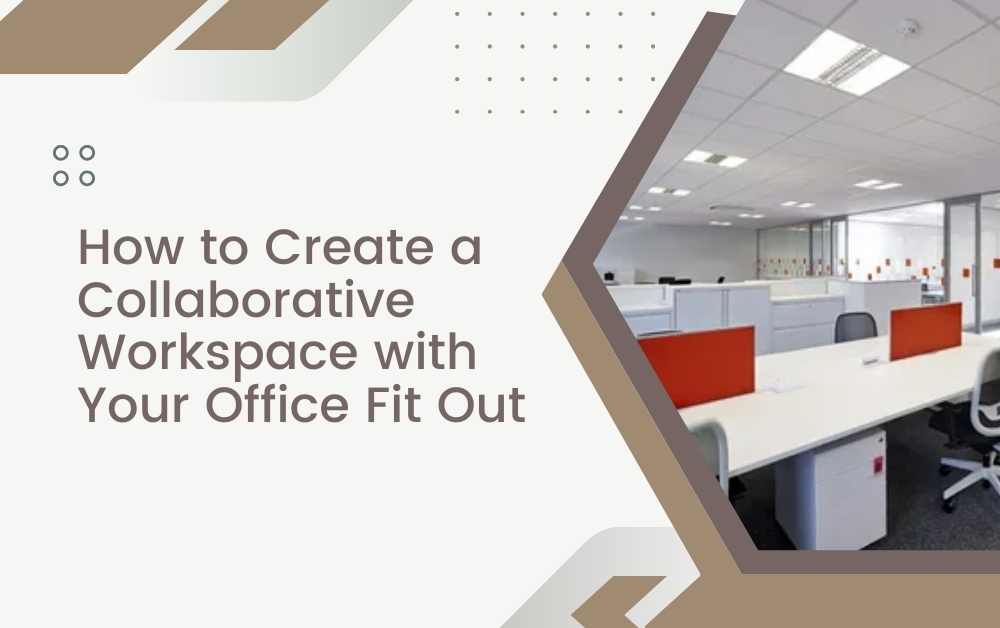Creating a collaborative workspace is more important than ever in today’s fast-paced and interconnected world. The design and layout of an office can significantly impact the way employees interact and work together. A well-thought-out office fit out can foster collaboration, creativity, and productivity, making it essential for businesses to invest in designing spaces that promote teamwork. In this blog, we will explore various strategies and ideas to help you create a collaborative workspace through your office fit out.
NOTE : Are you ready to elevate your office environment and boost productivity? Partner with the leading office fit out company in dubai to create a workspace that inspires and impresses. Contact us now for a free consultation and discover how we can turn your vision into reality. Don’t wait—let’s design the perfect office together!
Understanding the Importance of Collaborative Workspaces
Collaborative workspaces are designed to bring people together, encouraging them to share ideas, solve problems, and innovate. Unlike traditional office layouts, where employees work in isolated cubicles, collaborative spaces are open and flexible. They are equipped with various amenities and tools that facilitate interaction and teamwork. The importance of such spaces cannot be overstated as they can lead to higher employee satisfaction, better communication, and increased productivity. When employees feel connected and part of a team, they are more likely to be motivated and engaged in their work. Therefore, understanding the importance of collaborative workspaces is the first step in creating an effective office fit out.
Planning Your Office Fit Out for Collaboration
Planning is a crucial phase in creating a collaborative workspace. It involves understanding the needs of your employees and the nature of their work. Start by conducting surveys or meetings to gather feedback from your team about what they need to work more effectively. Consider the different types of work that occur in your office, such as individual tasks, group projects, and client meetings. Each of these activities may require different types of spaces. For example, open areas with comfortable seating can be great for brainstorming sessions, while private rooms might be necessary for focused work. It’s also important to consider the flow of movement within the office. Employees should be able to move freely between different areas without any obstacles. Effective planning ensures that the office fit out meets the diverse needs of your team and fosters a collaborative environment.
Designing Open and Flexible Spaces
Open and flexible spaces are at the heart of collaborative work environments. These areas should be designed to be versatile, allowing for different types of work to take place. Use furniture that can be easily rearranged to accommodate different activities. For example, modular desks and chairs can be moved to create larger workspaces for group projects or smaller areas for individual tasks. Incorporating movable walls or partitions can also add flexibility to your office design. These can be used to create temporary meeting rooms or quiet zones as needed. Additionally, using transparent materials like glass for partitions can help maintain an open feel while providing some level of privacy. Designing open and flexible spaces allows your office to adapt to changing needs and promotes a collaborative culture.
Incorporating Technology for Better Collaboration
Technology plays a vital role in facilitating collaboration in the modern workplace. Incorporating the right tools and systems into your office fit out can enhance communication and teamwork. Start by ensuring that your office has a robust Wi-Fi network that can support multiple devices and high-speed internet access. Equip meeting rooms with video conferencing tools to enable remote collaboration. Interactive whiteboards and digital display screens can be useful for brainstorming sessions and presentations. Providing employees with access to collaborative software, such as project management tools and cloud storage, can also streamline workflows and improve efficiency. By integrating technology into your office fit out, you can create a more connected and collaborative workspace.

Creating Comfortable and Inspiring Work Environments
Comfort and inspiration are key elements of a collaborative workspace. Employees need to feel comfortable and motivated to engage with their colleagues and contribute their best work. Start by choosing ergonomic furniture that supports good posture and reduces the risk of strain injuries. Comfortable seating, adjustable desks, and supportive chairs can make a significant difference in employee well-being. Additionally, consider the overall aesthetics of your office. Use colors, artwork, and decor that reflect your company’s culture and values. Natural light and plants can also create a more pleasant and stimulating environment. Creating comfortable and inspiring work environments can boost employee morale and encourage collaboration.
Providing Spaces for Informal Interactions
Informal interactions are often where the best ideas and collaborations occur. Providing spaces for these casual encounters can significantly enhance your office’s collaborative culture. These areas can include break rooms, coffee stations, or lounge areas with comfortable seating. Encourage employees to take breaks and socialize by providing amenities like coffee machines, snacks, and games. These informal spaces can serve as a breeding ground for creativity and innovation, as employees are more likely to share ideas and insights in a relaxed setting. Additionally, consider incorporating elements like whiteboards or bulletin boards where employees can jot down ideas or leave notes for their colleagues. Providing spaces for informal interactions can foster a sense of community and collaboration in your office.
Conclusion
Creating a collaborative workspace through your office fit out involves thoughtful planning, design, and continuous improvement. By understanding the importance of collaboration, designing open and flexible spaces, incorporating technology, and fostering a culture of teamwork, you can create an environment where employees can thrive and work together effectively. Remember to keep the needs and preferences of your team at the forefront of your planning and design process. A well-designed collaborative workspace can lead to increased productivity, innovation, and employee satisfaction, ultimately contributing to the success of your business.
For more insightful articles related to this topic, feel free to visit technewsideas
